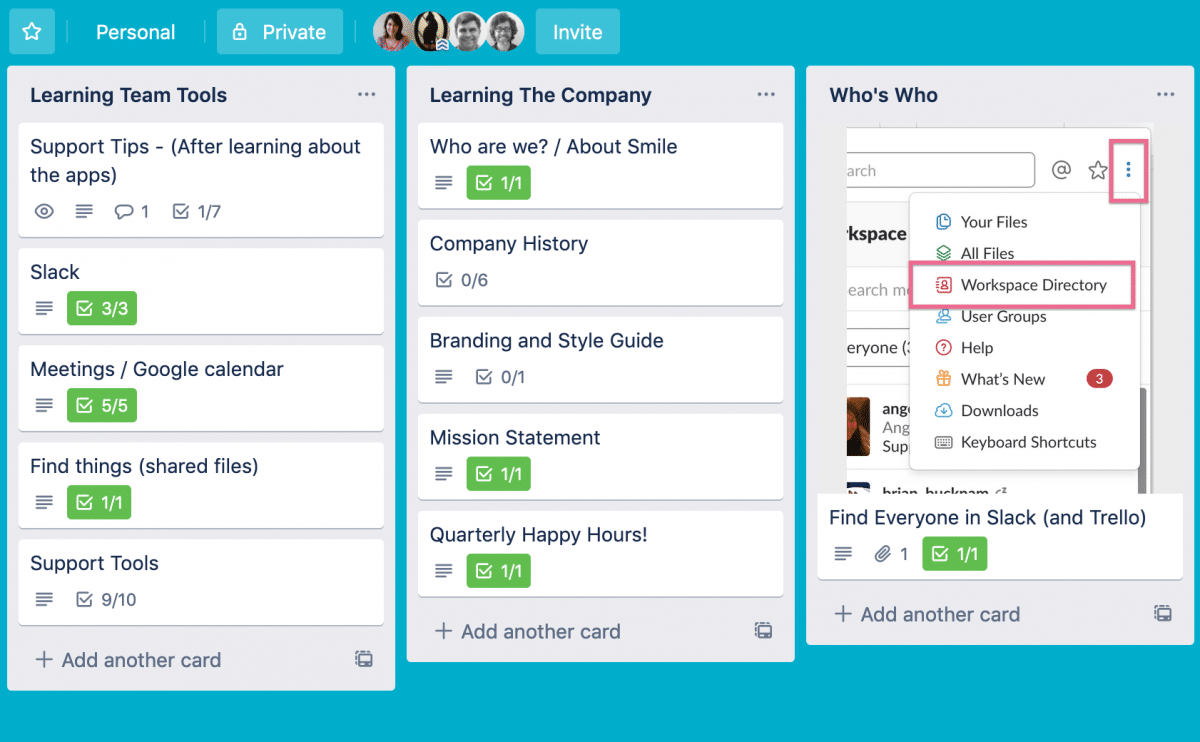You’ve done it! You’ve put in the work and made a new remote hire. But how can you ensure that your new employee will become an integral part of the team when they’re not there in person?
Many hiring managers face some worry around this prospect. There’s the issue of accountability: if you can’t see that your remote team member working, how do you know that they are?
Then there’s the quality of the work: how will you know that details aren’t being missed when you’re not on hand to observe?
You might also have retention in mind: how can you be sure your new employee feels connected and valued enough to create a lasting relationship?
The good news is that by confronting the challenges of integrating someone from afar, you can create an intentional process that might even benefit your in-person hires. Because the things that make a good onboarding process for remote employees are good for many scenarios:
- Established systems for communication and feedback
- Strong transmission of institutional knowledge
- Prioritization of information sharing
- A tech-savvy approach to getting work done
- Using input from your team to grow and improve
So what does this look like in practice?
Make your formal training process rock solid
It may seem obvious, but onboarding remote employees is a good time to take stock of what systems you have in place.
Ask top performers what was helpful in their onboarding
We’ve noted this for your sales team, but it holds true across the board: identifying your top performers and gathering their tips for success can be a crucial part of helping new people reach the same goals. Ask people with similar job functions to your new remote positions to find out what was helpful and what was lacking during their hiring process.
For many companies, the systems you currently have will provide a good starting point, but requires new additions for a remote workforce. Part of what you’re looking to establish is mutual trust. You want to feel confident that your new employee is on track, and they want to feel that you’re actively guiding them in that process.
Develop robust documentation
A key to this, as explained by ExactHire, is developing robust documentation. Think carefully about what you would normally expect in person, and codify that into the process. What would a new employee tap someone on the shoulder to ask about? Make sure that you have training materials on hand for setting up technology, completing day-to-day tasks, and reporting their work.
Create a journey for new hires to follow
Once you have these things in place, establish a clear journey for your new hires to follow. Create a timeline for completing training tasks and a system for checking in to be sure that they’re being understood properly. Make sure the new employee and their supervisor remain in sync through this process.
Embrace technology for active communication
Provide the tools they need to succeed
For remote employees, their digital space is their connection to your company. Make sure that you’re considering all of their needs. As Sapling discusses, while some employees may be completely set up with a home office, others may not be. And they may be hesitant to ask for supplies. Don’t wait for issues to arise: proactively discuss technology needs with each new hire, and consider setting aside a budget to allow them to purchase items that they may need in order to connect reliably and easily.
Use team collaboration tools
You’ll also want to make use of a variety of platforms in order to fit all the different communications needs of your workforce. A weekly video meeting with a supervisor over Zoom or GoToMeeting can help build a rapport and encourage your employee to feel connected. Slack or Discord channels set up for different working groups and peer groups can encourage more casual, top-of-mind conversation. And project management software like Trello, Asana, and Basecamp can help everyone on a team see the big picture and collaborate on tasks.
As part of the process of onboarding remote employees, make sure they’re set up and comfortable with all of the channels that you choose. You’ll also want to set clear understandings about how and when each one is used. In person, an employee whose emails are falling through the cracks can walk across the office to ask a question. A remote employee can be left in a lurch if your existing workforce isn’t equally involved in active communication.

Create opportunities for connection and sharing
Create opportunities for conversations to happen
The fact of the matter is that most of us rely, at least a little, on our new employees just picking things up by happenstance. In an office environment, holes in our new employee training get patched when they chat with someone about company culture over coffee, or overhear coworkers handling a call with a client. We can do our best to cover every conceivable topic in our formal training, but there is simply no substitute for peer-to-peer information sharing.
As the team at Zapier notes, the sort of casual conversation where this type of learning takes place is stilted and even awkward when done at a distance. As the employer, it’s your job to create a structure that opens those communication channels. New hires can still “have coffee” with a long-time coworker, or sit in on a call—it just takes a little effort to plan these meetings in a remote workplace.
Pair up the new hire with a senior employee
As part of your onboarding for remote employees, you’ll want to assign them a mentor. Zippia points out that this can be crucial to helping a new hire learn the company culture. A mentor can be someone more senior within their department tasked with helping them learn the ropes of their role. It can also be someone more tenured within a different job function who serves as a sounding board for how to get work done within the company. In either case, the relationship should be structured outside of the typical reporting hierarchy so that your new employee can feel comfortable asking questions.

Implement peer-to-peer coaching
Once they’re a bit further on in the onboarding process, consider integrating a peer-to-peer coaching structure. MIT Sloan reports that employees who have dedicated time spent in this practice feel 73% more included at work, and 65% more fulfilled. They explain, “With peer coaching, employees spend time in pairs, speaking with each other about their challenges, stresses, fears, and hopes. They listen and talk equally, and support and encourage each other’s vulnerability.”
By creating these direct social channels, you’re creating a formal structure where informal growth and support can flourish.
Seek out feedback
Check in during the first few months
Although the onboarding process is the final step of the recruitment journey, it’s not as simple as navigating the first 30 days and leaving it at that. Make sure you’re actively checking in with your new hires throughout their first months and even years at the company. At any milestone where you are evaluating the employee, ask them also to evaluate their integration into the company.
Invite them to help you improve the process
And as they become settled, ask them to look back and reflect on their experience. Especially if your company is new to onboarding remote employees, these new insights from the people who’ve lived it can be crucial to iterative improvements. Plus there’s the added bonus that when you ask your recently-new hires to help you build out your onboarding process, you’ll help them see that they’re fully part of the team.
Conclusion
It may seem challenging at first to create a cohesive team when some of your members are not in the office. But with a little time and effort, you can make structural changes that make the process straightforward and trackable. You’ll even find that these changes provide a benefit to your whole staff, whether onsite or off.
Better yet, once you feel confident in your ability to recruit and train employees no matter their location, you open your workforce to new levels of inclusivity. When location and accessibility are not impediments, you can truly hire the best person for the job.
How has your team handled integrating remote employees?

